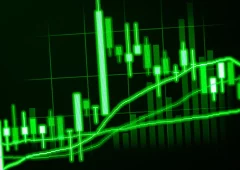Fears Over Solana’s Economic Structure Called Baseless
18.09.2024 8:30 1 min. read Alexander Stefanov
Justin Bons, founder and CIO of Cyber Capital, recently defended Solana (SOL) against criticisms of its economic structure, which some have compared to the downfall of Terra Luna in 2022.
Bons dismissed these comparisons as inaccurate, arguing that Solana’s economics are robust and entirely distinct from Terra Luna’s flawed model.
In a detailed post on X, Bons explained that fears about Solana’s economic design are unfounded. He emphasized that Solana’s inflationary model, which includes a long-term inflation rate of 1.5% and a 50% burn rate on the base fee, ensures both sustainability and scarcity over time.
Bons likened Solana’s economic approach to those used by established blockchains like Bitcoin (BTC) and Ethereum (ETH), where an initial phase of high inflation gradually decreases as the network matures.
One significant difference Bons highlighted is that Solana has implemented scalable architecture, unlike Ethereum, which continues to face scalability challenges. He also addressed concerns over the distribution of SOL tokens, asserting that Solana is in a better position compared to emerging blockchains like Aptos, Sui, and Sei.
Regarding changes to Solana’s fee structure, Bons clarified that only the priority fee burn was removed, while the base fee burn remains intact, ensuring the network’s continued efficiency. As of September 17, Solana showed signs of recovery, with its price rising by 1.13% to $132.49.
-
1
Coinbase Brings Cardano and Litecoin to DeFi via New Wrapped Tokens on Base
26.06.2025 18:00 1 min. read -
2
Nasdaq Firm Makes First Crypto Move With Bittensor Acquisition
26.06.2025 14:00 1 min. read -
3
Trump-Linked Truth Social Pushes for Bitcoin-Ethereum ETF as Crypto Strategy Expands
25.06.2025 19:00 2 min. read -
4
Crypto Company Abandons Bitcoin Mining to Focus Entirely on Ethereum Staking
26.06.2025 20:00 1 min. read -
5
Altcoin Market May Be on the Verge of Major Rally, Analyst Suggests
27.06.2025 14:00 2 min. read
Most Trending Cryptocurrencies on CoinGecko After Bitcoin’s New ATH
Bitcoin’s breakout to a new all-time high above $118,000 has reignited momentum across the crypto market. While BTC itself saw nice gains several altcoins are riding the wave of renewed investor interest.
Ethereum Jumps 8% to Reclaim $3,000
Ethereum surged 8.4% in the past 24 hours, reaching $3,010 as renewed interest in altcoins follows Bitcoin’s explosive rally.
Grayscale Reveals Which Altcoins Are Next in Line for Onclusion
Grayscale, one of the leading cryptocurrency asset managers, has unveiled its latest benchmark update structured around its Crypto Sectors framework.
Trump’s Truth Social to Launch Utility Token for Subscribers
Truth Social, the platform founded by Donald Trump, is moving deeper into the crypto space with plans for a utility token tied to its premium services.
-
1
Coinbase Brings Cardano and Litecoin to DeFi via New Wrapped Tokens on Base
26.06.2025 18:00 1 min. read -
2
Nasdaq Firm Makes First Crypto Move With Bittensor Acquisition
26.06.2025 14:00 1 min. read -
3
Trump-Linked Truth Social Pushes for Bitcoin-Ethereum ETF as Crypto Strategy Expands
25.06.2025 19:00 2 min. read -
4
Crypto Company Abandons Bitcoin Mining to Focus Entirely on Ethereum Staking
26.06.2025 20:00 1 min. read -
5
Altcoin Market May Be on the Verge of Major Rally, Analyst Suggests
27.06.2025 14:00 2 min. read


